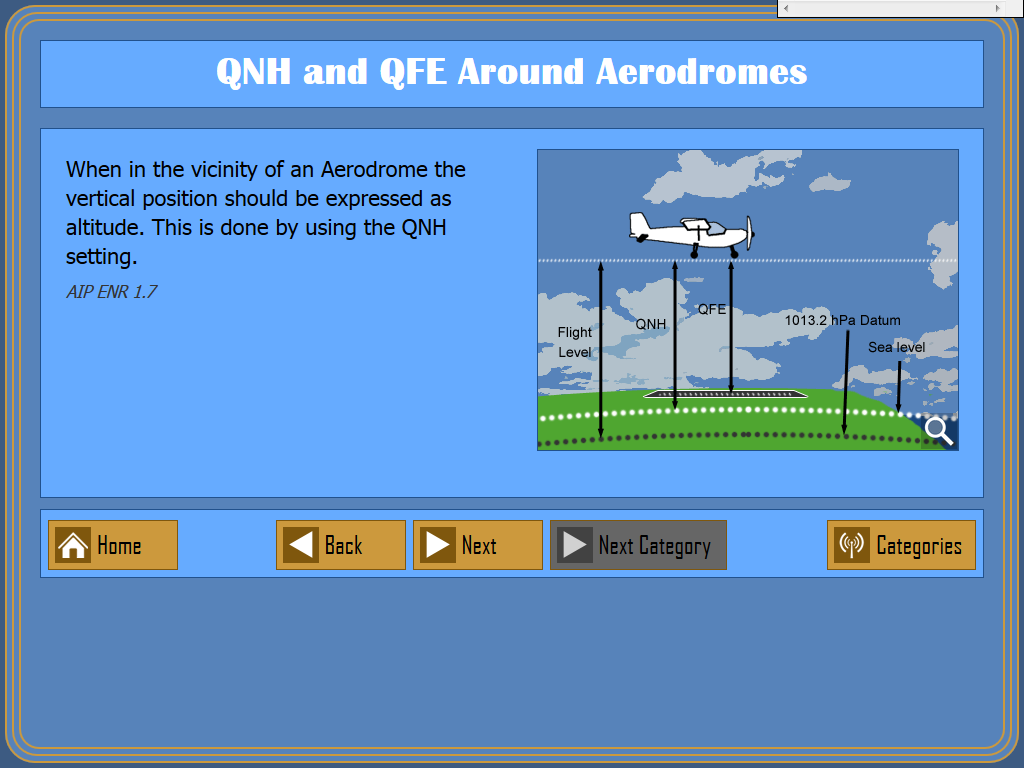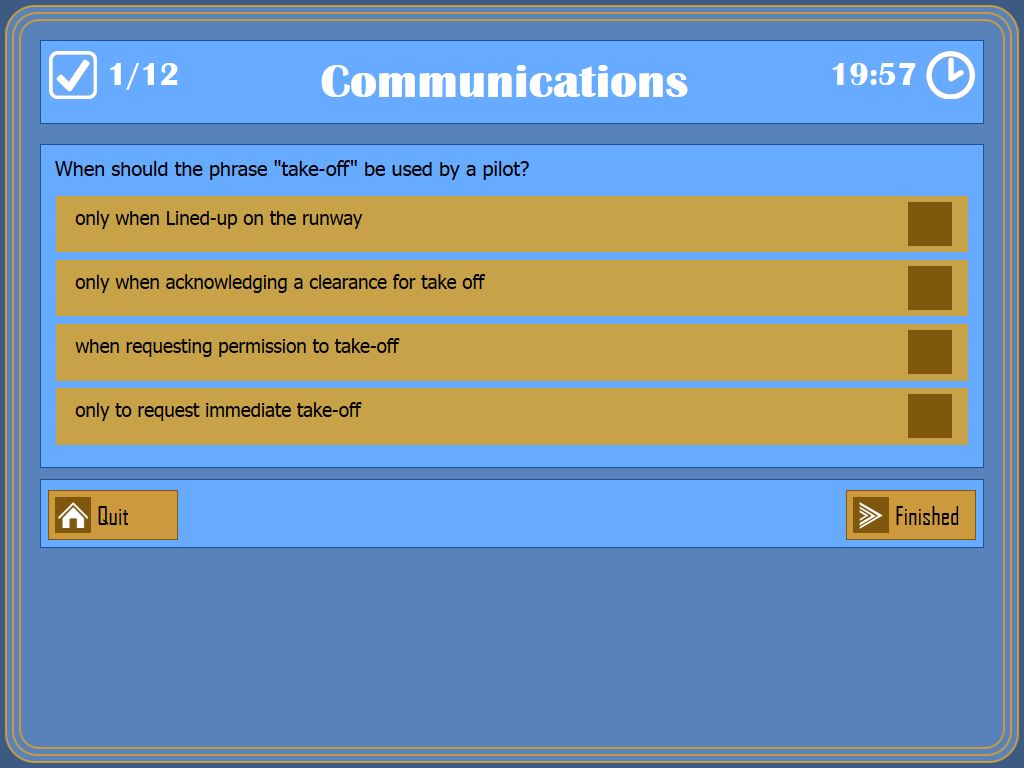PPL Communications Exam
The Communications exam covers the theoretical side of using the aircraft's radio. Once you start flying you'll be introduced to using the radio and, although it's often one of the most daunting aspects of flying, you'll be using it with increasing confidence each time you fly.
Aspects such as the phonetic alphabet will become almost second nature and you'll learn the difference between the different Aerodrome Flight Information Service (AFIS) services available both from flying experience and studying the Air Law and Navigation courses. Hence, it is generally straightforward to take the Communications exam in one of the earlier exam sittings just so you can tick it off of your list. You will also find some overlap with both Navigation and Operational Procedures, so if you take it at around the same time the information will be easier to recall.
The Communications exam itself consists of 12 multiple choice questions to be answered in 20 minutes, and hence is the shortest of all the ground school exams. This should give you an idea of how much simpler it is than Navigation, for example, which contains the same number of questions but is nearly twice as long. The pass mark is still 75% which means you must answer 9 questions correctly.
The PPL EASA Exam Tutor application can help you to practice with mock exams and revision, allowing you to try out questions in the same format as the exam. Our revision pages help you to remember key pieces of information, which is especially relevant to some pieces that you may not have experienced in regular flight yet, such as full Air Traffic Control (ATC) services or Military Aerodrome Traffic Zones (MTAZ).
 An example of Communications revision content in PPL Tutor
An example of Communications revision content in PPL Tutor
 An example Communications exam question in PPL Tutor
An example Communications exam question in PPL Tutor